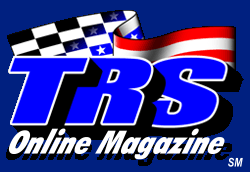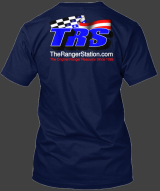All-New
Ford Ranger Raises the Bar on Safety
- Ranger utilizes Dynamic
Stability Control (DSC), along with a suite of safety
technologies such as Trailer Sway Control and Hill Descent
Control, to further enhance driver control
- New side curtain, thorax,
and frontal impact airbags available on Ranger for even
greater protection to both the driver and the passengers
MELBOURNE, Australia, 26
September, 2011– The all-new Ford Ranger is setting
new standards in safety with a comprehensive suite of safety
features – such as the Dynamic Stability Control (DSC) and
side curtain airbags – to address the growing need for
occupant safety in Australia's light commercial vehicle
segment.
Ranger’s advanced safety
protection begins with a reinforced passenger cell that utilizes
high-strength steel throughout. Utilizing multiple load
paths in the front, side, and rear of the vehicle, crash
forces are directed away from occupants, providing high
levels of protection in the event of a collision. This
structure, along with the all-new ladder frame, was optimized
to manage the crash energy in a variety of impacts and
provide protection for all passengers.
Using sophisticated computer modeling,
engineers assessed more than 9,000 virtual crash tests
before any of the 110 actual vehicle crash tests or 410
system sled tests were undertaken. These virtual simulations
allowed the engineers to optimize the vehicle
structure and safety systems to provide the maximum levels
of protection possible in a wide-range of real-world
collisions. All this was achieved before any real prototype
vehicle was built and subjected to crash testing.
“Safety has become
increasingly important in the commercial vehicle segment as
more people use their vehicle to carry not just goods but
also people,” said Dr. Mark Fountain, manager of
Digital Innovation Attributes, Product Development, Ford
Asia Pacific and Africa (APA). “The all-new Ford Ranger is
packed with the latest safety features and technologies
aimed at giving customers peace of mind as they drive.”
Actively improves driver
control
New to Ranger, DSC is an active
safety system that improves driver control under all
conditions and maximises vehicle traction and stability both
on and off road. It uses advanced sensors to continuously
monitor the path the vehicle is travelling on and compares
it to the path the driver wants to follow, as indicated by
the steering wheel.
When DSC senses that the vehicle
is turning more (oversteer) or less (understeer) than the
driver intends, the system automatically reduces engine
torque and/or applies a braking force to individual wheels
to stabilize the vehicle and help it maintain the correct
path. This is particularly useful in situations where the
roads are slippery, when the driver has to make a sudden
lane change to avoid an accident or where there is
inadequate grip or vehicle speed when cornering.
According to Stephan Presser,
manager of Vehicle Engineering, Product Development, Ford
APA, independent studies have confirmed that a large number
of single-vehicle accidents can be avoided on vehicles
equipped with DSC. “It’s a great system that delivers
active safety for customers regardless of their driving
experience,” he said.
“The DSC monitors the
vehicle’s direction against the driver’s intentions 25
times per second and can react like greased lightning when
needed. Within physical limits, the car remains safely on
track.”
Ranger’s DSC system has been
calibrated for both on- and off-road driving. In a 4x4
model, when the driver selects 4WD high-range (4H), the DSC
control of the engine and brakes is adjusted to provide
improved stability without any unnecessary interventions
triggered by rough or bumpy road surfaces. The DSC system is
disabled when 4WD low-range (4L) is engaged to provide the
driver with full command of the engine torque.
While the DSC system is by
default fully active when the vehicle is started, the driver
can choose to leave it on, partially on, or off depending on
the road conditions.
In 4H mode, the stability
control can be deactivated while maintaining the brake
intervention traction control. This setting is most suitable
when driving in deep sand or on muddy surfaces where engine
torque reductions from the DSC can limit mobility. In 4x2
vehicles, the driver can select the all-off mode when wheel
spin is needed to power through deep snow, sand or mud.
Integrated safety
technologies
Ranger comes with a
comprehensive suite of control features that are integrated
in the DSC system to further improve vehicle stability and
control.
Available on 4x4 models and
activated via a switch on the instrument panel, the Hill
Descent Control feature regulates the speed of the
vehicle when descending steep gradients. It automatically
applies the brakes to slow the vehicle down to a set speed
without the driver applying the brakes and without locking
the brakes. Unlike in competitors where the set speed cannot
be adjusted, the Ranger driver can increase or decrease the
speed using the accelerator, brake, or cruise control
buttons on the steering wheel.
When moving off up a slope
either in forward or reverse gear, the Hill Launch Assist
feature holds the brake pressure temporarily for two
seconds, ensuring the pickup does not roll downhill. As the
driver accelerates, the feature gradually reduces the brake
pressure. It releases the brakes once the driving torque is
enough to overcome the gradient, enabling the pickup to move
up the slope smoothly. With this feature, a fully-laden
Ranger, which weighs about 3200 kilograms, is able to stop
and then pull away on a 60 percent grade – not a feat
easily achieved by all trucks.
For those who need to tow a
trailer, Ranger has a Trailer Sway Control feature
that mitigates the problem of ‘snaking’, which can be
caused by side winds, track ruts, sudden steering movements,
or an incorrectly laden trailer. When trailer sway occurs,
the system detects the effect on the towing vehicle and
operates to reduce the train speed by reducing engine torque
and gradually increasing brake pressure on all wheels until
the trailer sway stops.
When it comes to accompanying
Ranger’s exceptional payload capacity, the pickup has an Adaptive
Load Control feature that adjusts the stability control
depending on the load. It can tell whether the pickup is
laden or not based on the speed of acceleration and will
adjust the DSC's control settings accordingly. This will
prevent interventions from happening too early where they
are unwanted or too late where there would be too much
oversteer or understeer.
Ranger also has a Roll-Over
Mitigation safety feature that closely monitors the
pickup’s speed, lateral acceleration, yaw motion and
steering angle, and will identify potentially dangerous
driving conditions that would lead to an untripped roll-over
situation. Well before the situation becomes critical, the
feature will cause the DSC system to intervene and control
the vehicle speed to restore stability.
To further maximize traction at
each driven wheel, Ranger comes with the Traction Control
System which can prevent wheel spin proactively by
precisely controlling engine torque to each wheel and by
braking a spinning wheel completely.
Stopping quickly and
effectively
Ranger’s DSC system includes
various braking technologies to ensure the shortest possible
stopping distance under all circumstances. When the driver
applies the brakes quickly in an emergency situation, the Emergency
Brake Assist will provide additional pressure to the
brake system to increase the braking force and reduce the
distance required for the vehicle to stop. At the same time,
the Emergency Brake Light feature will flash the
indicator lights to warn other drivers during emergency
braking.
Ranger’s Anti-Lock Brake
System (ABS) provides additional safety, especially with
Gravel Road Logic that further improves stopping distances
on loose surfaces, which are common in countries with a lot
of unsealed roads. The electronic brakeforce distribution maximizes
brake force used on the rear wheels as payload changes while
maintaining optimal stability.
Ranger’s brakes – vented
disc brakes up front and drum brakes in the rear – are
among the largest in its class and are designed to provide
maximum braking performance under loaded conditions. To help
reduce the possibility of pad contamination and rotor wear
from pebbles that may become embedded between the rotor and
pad, front brakes include a brake dust shield as standard
equipment.
“In line with our move towards
greater sustainability, the brake linings on Ranger are
constructed from the latest non-asbestos organic materials
which not only meet global comfort requirements for noise
and pad life but also fulfill pickup truck thermal and fade
requirements,” added Dr. Fountain.
Passenger and pedestrian
safety
Ranger offers new passive safety
technologies, with the availability and array of airbags
dependent on the model. Side curtain airbags are available
on all cab styles for the first time. These airbags deploy
from the headliner to provide a protective cushion for the
head of outboard occupants in the event of a side impact and
the curtain is designed to protect both rows of occupants by
covering the upper side structure and glass from the
A-pillar to the C-pillar.
Also available on select models
are newly designed side thorax airbags, building on the
protection offered by the high-strength passenger cell in
side impacts. Thorax airbags deploy from the driver and
front passenger seat, further cushioning the impact and
reducing the crash forces experienced by occupants in the
front seats.
All-new frontal impact airbags
for the driver and front passenger are standard equipment on
every model, along with seatbelt pretensioners and load
limiters (outboard front seats only). Together these form
the key parts of a frontal impact restraint system that has
been designed to minimize the force applied to the wearer in
a crash. The pretensioner ensures the restraint system
starts absorbing energy as early as possible in a crash,
while the load limiters and airbags reduce loads on the
occupant as the vehicle rapidly comes to a stop.
There are three-point safety
belts for all seating positions, while the Ford BeltMinder
technology (standard on all models except XL Single Cab
Chassis where it is optionally available) helps remind
front-seat occupants to wear their belts. The seat belt
reminder warning lamp illuminates and an audible warning
will sound if the driver’s seat belt has not been fastened
after the vehicle has moved off.
For the first time, a Thatcham
Category 1 volumetric alarm system is available on all
turbo-diesel Ranger models. The high-level system provides
additional security with an audible alarm triggered by
forced entry or a change in cabin pressure. The sensors act
as a deterrent against unauthorized intrusion by picking up
any movement within the vehicle.
On top of safety technologies,
Ranger has been engineered to include Ford proprietary
pedestrian protection features. This includes a
“hexageneous” under-bonnet structure to reduce the
potential for pedestrian head injuries and a front bumper
design that incorporates energy-absorbing materials.
"The all-new Ranger
combines the safety and security systems of passenger cars
with the ruggedness and dependability of a pickup truck,”
said Dr. Fountain. “It creates a combination of features
and performance that is unmatched in the market today."
At a glance: All-New Ford
Ranger's safety features
- Reinforced passenger cell utilizing
high-strength steel
- Dynamic Stability Control
(DSC)
- Traction Control System
- Hill Descent Control
- Hill Launch Assist
- Trailer Sway Control
- Adaptive Load Control
- Roll-over Mitigation
- Airbags: driver and front
passenger (all models)
- Airbags: side curtain
airbags (all models except XL Single Cab Chassis where
these are optionally available)
- Airbags: side thorax airbags
(all models except XL Single Cab Chassis where these are
optionally available when fitted with bucket seats)
- Three-point seatbelts for
all seats with Beltminder technology
- Seatbelt pre-tensioners with
load limiters
- ABS anti-lock brakes with
gravel logic control
- Emergency Brake Assist
- Emergency Brake Light
About Ford Motor
Company
Ford Motor Company, a
global automotive industry leader based in Dearborn,
Mich., manufactures or distributes automobiles across six
continents. With about 166,000 employees and about 70
plants worldwide, the company’s automotive brands
include Ford and Lincoln. The company provides financial
services through Ford Motor Credit Company. For more
information regarding Ford’s products in Australia,
please visit www.ford.com.au



